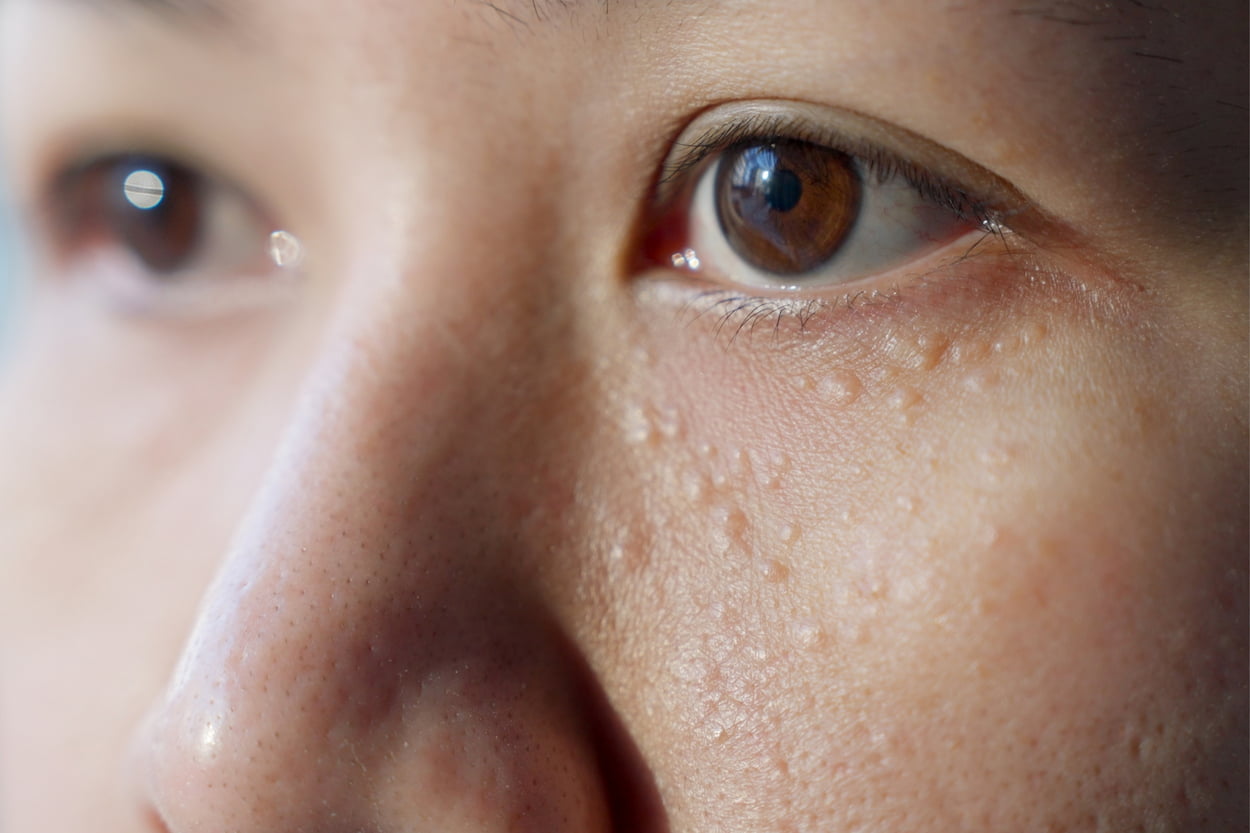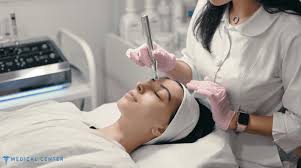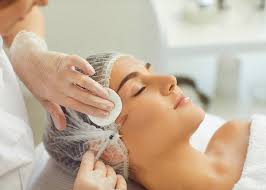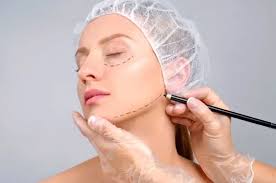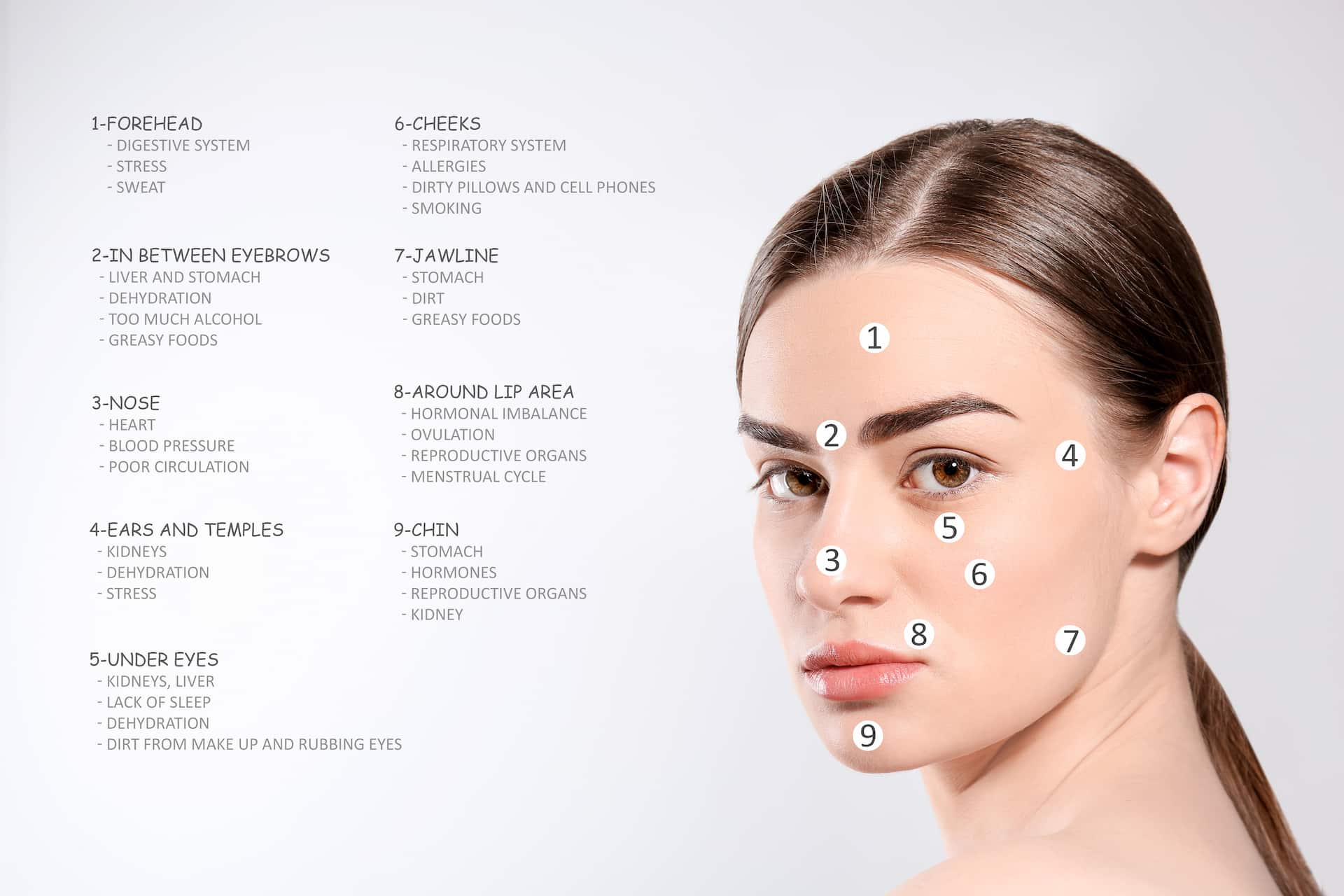
Acne Face Map
Acne is a common skin condition that affects millions of people worldwide, regardless of age or gender. It occurs when hair follicles become clogged with oil and dead skin cells, resulting in pimples, blackheads, whiteheads, and other types of breakouts.
Acne can be caused by various factors, including hormonal changes, stress, diet, and genetics. In this article, we will explore the different types of acne, the acne face map, and what your acne is telling you through face mapping.
What is an Acne Face Map?
The acne face map is a technique used to identify the potential underlying causes of acne breakouts based on the location of the blemishes on the face. According to this technique, each area of the face corresponds to a particular internal organ or system in the body, and breakouts in that area may be indicative of an issue with that organ or system.
For example, breakouts on the forehead may be associated with digestive issues, while breakouts on the chin may be linked to hormonal imbalances. By examining the location of the acne on your face, you may be able to identify the underlying cause of your breakouts and take steps to address the issue.
It is important to note that while the acne face map can be a helpful tool in identifying potential causes of acne, it is not a foolproof method, and not all breakouts are necessarily linked to an internal issue. Additionally, it is always a good idea to consult with a dermatologist or other healthcare professional for a proper diagnosis and treatment plan.
Overall, the acne face map is a useful technique for gaining insight into the potential underlying causes of acne breakouts, and it can help guide you in making changes to your diet, lifestyle, or skincare routine to address these issues.
Acne Face Map Areas
The acne face map divides the face into different zones, each corresponding to a particular internal organ or system in the body. Here are the common areas of the face and the organs/systems they correspond to according to the acne face map:
Forehead: The forehead is associated with the digestive system, particularly the liver and stomach. Breakouts in this area may be caused by consuming too much sugar or fat, or by a food allergy or sensitivity.
T-Zone: The T-Zone, which includes the forehead, nose, and chin, is associated with the hormonal system. Breakouts in this area may be caused by fluctuations in hormone levels, particularly during puberty, menstruation, or pregnancy.
Cheeks: The cheeks are associated with the respiratory system, particularly the lungs. Breakouts in this area may be caused by exposure to air pollution or smoking.
Nose: The nose is associated with the circulatory system, particularly the heart. Breakouts in this area may be caused by high blood pressure or poor circulation.
Chin: The chin is associated with the digestive system and the reproductive system. Breakouts in this area may be caused by stress, hormonal imbalances, or digestive issues.
It is important to note that the acne face map is not a definitive diagnosis and should be used in conjunction with other factors, such as personal health history, lifestyle, and skincare routine, to identify the root cause of acne breakouts.

Causes Of Acne According to Face Map Areas
While the acne face map is not a definitive diagnosis, it can offer insights into the potential causes of acne breakouts based on the location of the blemishes on the face. Here are some of the potential causes of acne breakouts based on the different areas of the face, according to the acne face map:
Forehead: Breakouts on the forehead may be caused by a variety of factors, including poor diet (such as consuming too much sugar or fat), food allergies or sensitivities, and digestive issues (such as constipation or irritable bowel syndrome). Additionally, wearing hats or headbands that trap sweat and oil against the skin can also contribute to breakouts on the forehead.
T-Zone: Breakouts in the T-Zone, which include the forehead, nose, and chin, are often caused by hormonal imbalances. This can be particularly true during puberty, menstruation, or pregnancy when hormone levels are fluctuating. Additionally, stress can also contribute to breakouts in this area.
Cheeks: Breakouts on the cheeks may be caused by exposure to air pollution or smoking. Additionally, using skincare products or cosmetics that contain pore-clogging ingredients can also contribute to breakouts on the cheeks.
Nose: Breakouts on the nose may be caused by high blood pressure or poor circulation. Additionally, consuming too much spicy or salty food can also contribute to breakouts on the nose.
Chin: Breakouts on the chin may be caused by a variety of factors, including stress, hormonal imbalances (such as those related to menstruation or menopause), and digestive issues (such as food allergies or constipation). Additionally, wearing tight-fitting clothing or helmets can also contribute to breakouts on the chin.
Again, it is important to note that the acne face map is not a definitive diagnosis, and breakouts may have multiple causes. Consultation with a dermatologist or other healthcare professional can help identify the underlying cause of acne and provide effective treatment options.
How to Prevent Acne?
Preventing acne breakouts requires a combination of good skincare habits, a healthy diet, and lifestyle choices. Here are some tips for preventing acne breakouts based on the different areas of the face, according to the acne face map:
Forehead: To prevent breakouts on the forehead, it is important to maintain a healthy diet that is low in sugar and fat and high in fiber. Additionally, avoiding hats or headbands that trap sweat and oil against the skin, and using non-comedogenic skincare products can also help. Finally, regular exercise and stress management techniques, such as meditation or yoga, can also be beneficial.
T-Zone: To prevent breakouts in the T-Zone, it is important to maintain a healthy lifestyle and diet that supports hormonal balance. This may involve consuming a balanced diet that is rich in fruits, vegetables, lean protein, and healthy fats, and avoiding sugary and processed foods. Additionally, regular exercise, stress management techniques, and getting enough sleep can also help.
Cheeks: To prevent breakouts on the cheeks, it is important to protect the skin from environmental pollutants and irritants. This may involve wearing a protective mask or avoiding heavily polluted areas. Additionally, using non-comedogenic skincare products, avoiding harsh chemicals or abrasive scrubs, and regularly cleaning makeup brushes can also be beneficial.
Nose: To prevent breakouts on the nose, it is important to maintain good circulation and a healthy diet. This may involve consuming foods that are rich in antioxidants, such as berries and leafy greens, and avoiding spicy or salty foods. Additionally, regular exercise and avoiding smoking can also help.
Chin: To prevent breakouts on the chin, it is important to maintain good digestive health and hormonal balance. This may involve consuming a healthy diet that is rich in fiber and probiotics and avoiding processed and sugary foods. Additionally, stress management techniques, such as meditation or yoga, can also be beneficial. Finally, avoiding tight-fitting clothing or helmets that trap sweat and oil against the skin can also help.
The Study of Acne Face Map
A comprehensive study published in the Journal of Dermatology examined the correlation between dietary factors and acne location, validating the principles of the acne face map. The research followed a diverse group of 1,000 participants over a two-year period, tracking their dietary habits and acne breakouts. The study found that individuals who experienced forehead breakouts were more likely to have diets high in sugary and fatty foods, while those with chin acne were associated with hormonal imbalances and stress. These findings lend scientific support to the acne face map as a tool for understanding the potential dietary and lifestyle causes of acne breakouts.
Healthy Türkiye notes
In conclusion, the acne face map is a useful tool for understanding the potential causes of acne breakouts based on the location of blemishes on the face. While the acne face map is not a definitive diagnosis, it can provide valuable insights into underlying issues that may be contributing to breakouts. By understanding the potential causes of acne breakouts based on the acne face map, individuals can take proactive steps to prevent breakouts and improve overall skin health.
Preventing and treating acne breakouts requires a combination of good skincare habits, a healthy diet, and lifestyle choices. By maintaining a healthy lifestyle that includes regular exercise, stress management techniques, and a balanced diet, individuals can reduce their risk of acne breakouts. Additionally, using non-comedogenic skin care products and avoiding harsh chemicals or abrasive scrubs can also be beneficial.
Finally, it is important to note that acne breakouts can have multiple causes and can be complex to treat. Consultation with a Healthy Türkiye’s dermatologist can help identify the underlying cause of acne and provide effective treatment options. With proper care and attention, individuals can maintain clear, healthy skin and prevent acne breakouts from affecting their overall well-being.
